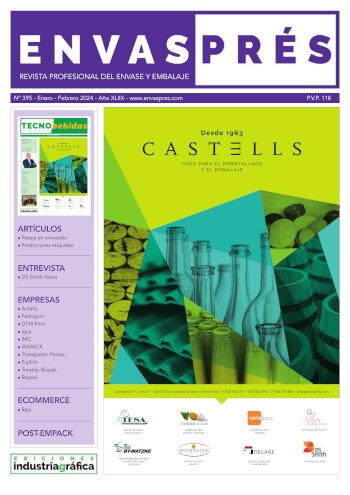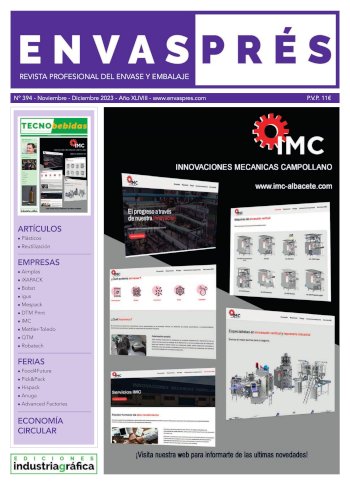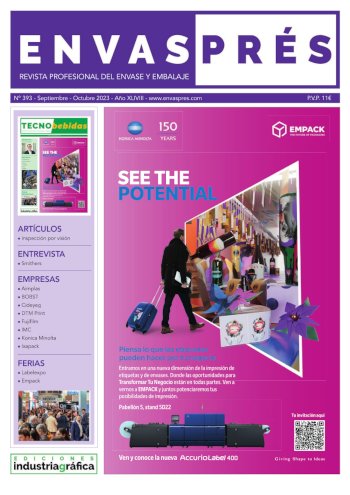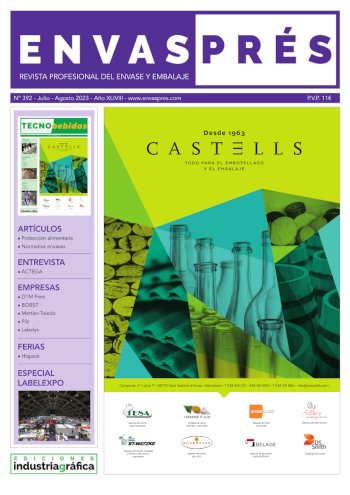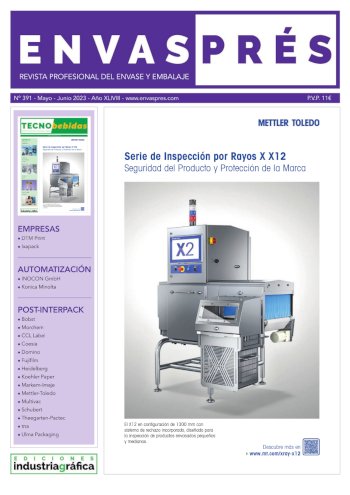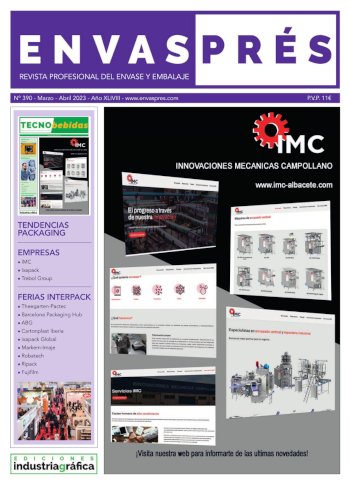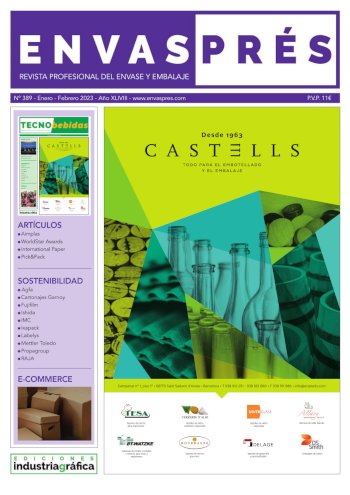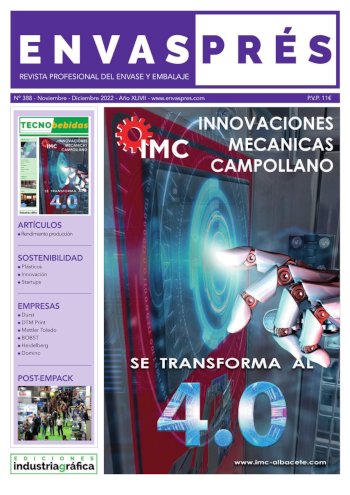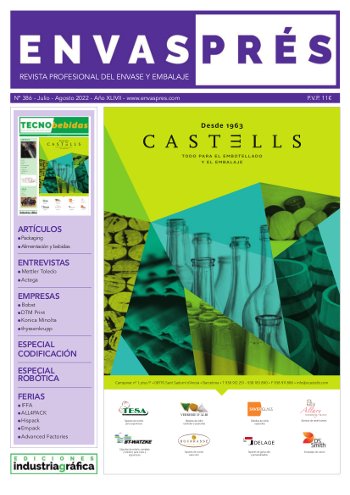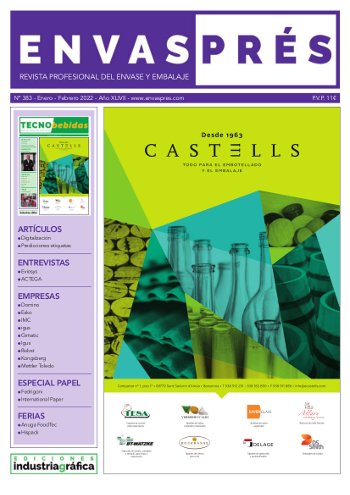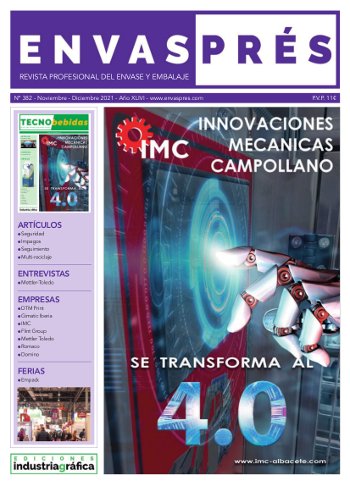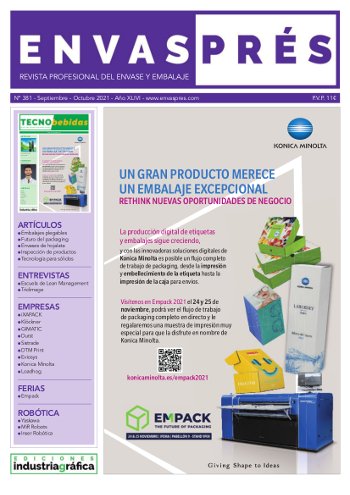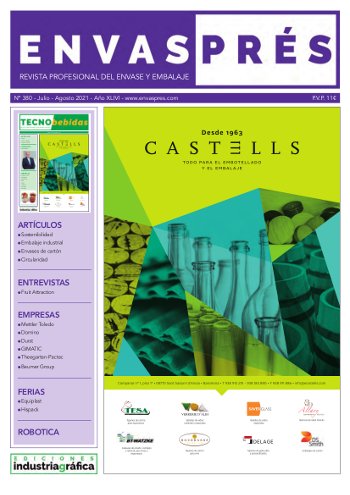Honeycomb materials delivering performance and growth in packaging
- Publicado el 26 de Julio de 2018
EconCore actively licenses its technology for the continuous production of thermoplastic honeycomb core materials, to companies around the world in various industry sectors. The advantage of being able to produce core materials with optimized performance-to-weight ratios, at high speeds, in high volumes, and with the lowest possible costs, has brought the honeycomb structure – once reserved for aerospace and low volume, less cost-sensitive domains – to mass markets.
The early breakthroughs for EconCore’s technology were in packaging, with the company’s first licensee in Japan (Gifu Plastics) focusing on lightweight high-performance solutions made with polypropylene honeycomb-cored sandwich panels. Over time, the advantages offered by an efficient material geometry produced with an efficient technology have attracted many more new users focusing on packaging – and other sectors too – with EconCore’s licensing footprint now also including automotive, transportation, building and construction, and PP core materials for composites.
Packaging remains the cornerstone of EconCore’s licensing business, with the largest share of licensing dedicated to applications in this sector. Building on this experience and the growing market share for honeycomb materials in packaging materials, EconCore technology is now a more attractive opportunity than ever for packaging companies as they plan new investments.
The honeycomb structure is recognized as optimal in terms of material utilization for performance. A comparison of the different core structures used today in packaging confirms this view. Consider the conventional fluted design (widely known as twin-wall corrugated), with its direction-specific structure: although rigid and strong in the longitudinal (machine) direction, these properties are much lower in the cross direction. Packaging materials made with a true honeycomb core structure have better and more directionally-balanced performance than the conventional fluted design – and they also weigh less.

Cup-shaped core structures, also common in packaging, exhibit a more balanced bi-directional performance in general, compared to fluted structure. However, in terms of compression strength and weight, the true honeycomb structure significantly outperforms cup-shaped core materials.
Whereas the non-isotropic design of the fluted structure clearly explains the imbalance in performance, for cup-shaped structures the reason is due to the production process. During the forming process to make the cup-shape core, the material stretches severely and unevenly, leading to very thin walls in the cup tops and a reduction in mechanical performance. This is particularly acute for thicker packaging parts, as the stretching increases directly with thickness increase.
The true honeycomb core structure created by the EconCore process, with its hexagonal cells initially oriented horizontally and then folded vertically with adjacent walls all connected to each other, shows greater rigidity, a higher flexural modulus, higher flexural strength and higher compression strength. It is well known from aerospace applications that a hexagonal honeycomb is overall the best design for sandwich structures. With the EconCore technology, this core geometry is available for industrial packaging applications.
The growth in reusable industrial packaging for honeycomb core materials has been very evident over the last few years – especially among European automotive OEMs who use collapsible sleeve pack systems for internal transportation of parts to their various assembly locations. It is estimated that upwards of 20% of this market is made up today of sleeve packs made using EconCore technology. Growth is continuing at a rapid pace.
There is no doubt that the mechanical performance of products made using EconCore technology, with their honeycomb structure in the package walls, contributes to the growth in the OEM market. Consider sleeve packs having an areal density of 3000 g/m², one set made with true honeycomb core made using EconCore technology and another set made with a cup-type core: the compression strength for the honeycomb core is on average 65 percent higher than for the cup-type core. The honeycomb core sleeve packs also show more consistency of performance.
These results show that honeycomb core materials are clearly raising the bar in performance and are emerging as the new standard in reusable industrial packaging. This superior performance provides a great opportunity for the sleeve pack producer to reduce weight per piece, leading to dramatic bottom-line benefits through reduced material and energy costs and potentially at even higher output speeds.
Since the first production line using EconCore technology for honeycomb panels was started up, the development and commercialization of a broad range of products to meet various needs in packaging, some geographically specific, has taken place. In Japan for example, Gifu Plastics, which invested in a second production line to meet the market demand, has developed a variety of sleeve boxes to meet specific customer needs; these include boxes with four-side opening and closing, sleeve boxes with a transparent view section integrated into the packaging, and boxes with aluminum frames for exceptionally heavy goods, to mention a few.
Gifu is also extending into other industrial packaging/logistics solutions, such as lightweight washable pallets with honeycomb core materials, as well as layer pads for protection of goods during transport and for in plant material handling. Gifu also has a range of foldable storage and delivery boxes of various dimensions, components for carry-carts, container covers and even partition walls for logistics facilities.
Karton of Italy, long known for its leadership in thermoplastic packaging, uses EconCore technology for producing industrial packaging solutions that are setting a new standard in performance. Honeycomb core sandwich panels made by Karton are used for sleeve packs in collapsible reusable packaging systems that significantly out-perform alternatives. By combining its expertise in packaging with the technology to produce true honeycomb structured materials, Karton is delivering a world-leading solution that benefits the user of reusable packaging solutions with high performance per unit weight and the potential to increase reuse cycles. Extending its range of honeycomb core packaging materials, Karton is also offering solutions for automotive component logistics with heavy duty layer pads to protect delicate and costly automotive components during transport.
Since installing its honeycomb panel production line, EconCore technology user Röplast of Turkey has focused largely on developing business for automotive interior cladding applications. Röplast recently took a major step forward by extending its offering to include reusable industrial packaging. Its HexaPak® reusable packaging system is taking the Turkish market by storm today, especially for intra-and inter-site logistics of customers in Turkey. HexaPak foldable containers collapse to take up to 80% less volume; this makes them ideal in the reusable industrial packaging cycle, where goods are loaded and transported, with empty containers then either being refilled to continue their path in the logistics chain, or are collapsed and returned to the source location for reuse. HexaPak, made using EconCore technology, delivers high performance-to-weight, with the number of cycles that containers can withstand potentially being greater than traditional packaging.
The success that EconCore technology users have achieved with reusable packaging applications is the result of their innovative mindset and a tenacity to develop solutions for the markets they serve. For EconCore, the experience gained with each new installation of the technology around the world is leading to continuous improvements. This provides benefits for existing users of the technology and, of course, new users.
Looking today at packaging, there is clearly an attractive opportunity for new technology investors. Today, EconCore technology can deliver industrial packaging products of the sort that are becoming the new standard in performance among the most critical end-users in the OEM market. Regionally speaking, the opportunity to leap-frog competition is particularly interesting where reusable industrial packaging is heating up. A new technology investor bringing the emerging standard of performance with true honeycomb core packaging solutions, proven every day in Europe, into a new region, could jump to the top as a preferred supplier based on quality, consistency, and performance.
Considering CAPEX, EconCore observes that the level of investment to install its technology is potentially significantly less than competitive technology options. Experience is valuable and the process by which EconCore supports a new licensee with equipment selection optimizes the equipment choice to the user’s need. The ability to offer a product range suited to the user’s home market requirements and preferences, often geographically specific, is a key attribute of the versatile technology.
With the new standard in performance, consistency, attractive investment and payback potential, and a product range to match the market, the opportunity is ripe for new investors in EconCore technology for packaging.


